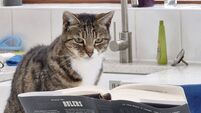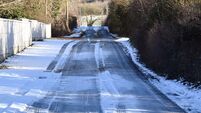Website on Irish mammals
It’s run by the Vincent Wildlife Trust, which is a British-based NGO concerned with the conservation of wild mammals in Britain and Ireland. It has a permanent presence in this country in the person of Dr Kate McAney, who is one of our foremost experts on bats.
The Trust has been operating in this country for over 20 years and has done much good work. Before the website opened this work concentrated on two areas — research into the ecology and distribution of mammal species in Ireland and practical conservation work, including the establishment and management of reserves.
In Britain it has worked with several rare species that are not found in this country, such as the polecat, dormouse and water vole. In Ireland the emphasis has been very much on our bat species, particularly the lesser horseshoe bat.
However, they have also sponsored research into otters, pine martens and the Irish stoat, which is a separate sub-species. The website initially deals with 13 Irish mammals and has distribution maps provided by the National Biodiversity Data Centre as well as a lot of general information.
The lesser horseshoe bat is a rare species, recent estimates put the national population at around 12,500 individuals. The species has another stronghold in Wales, but our population is one of the largest left in western Europe and of great international importance. In Ireland they are only found along the western seaboard in counties Clare, Cork, Galway, Kerry, Limerick and Mayo.
They are small bats and the only Irish species to belong to the rhinolophidae family, all the others are vespertilionidae. They get their name from horseshoe shaped flaps of skin on their faces which are part of their echo-location system.
Their summer roosts are usually in old houses or outbuildings. In winter they roost in caves, disused cellars, mines and souterrains. In both cases they don’t huddle together for warmth, as most other Irish bat species do, they hang individually from a horizontal surface and wrap their wings round themselves like a blanket.
In both the summer roosts and the winter roosts they are very vulnerable to disturbance.
In fact waking a colony from winter hibernation can result in them all dying. This is one reason why they’ve become so rare.
* www.mammals-in-ireland.ie














